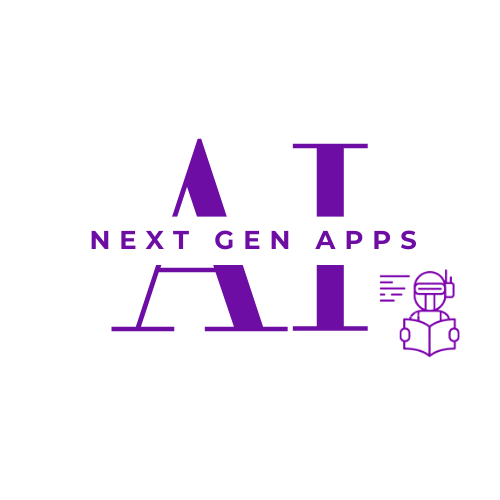In the age of information overload, efficient and accurate information retrieval is paramount. Traditional search engines rely on single-vector embedding models, which prioritize speed over precision. However, this approach often creates an information bottleneck, limiting the model’s ability to capture the nuances of natural language.
ColBERT (Contrastive Language BERT) emerges as a groundbreaking solution, addressing the shortcomings of traditional methods. This blog post delves into the world of ColBERT, exploring its structure, advantages over dense embeddings, and limitations.

Table of Contents
ToggleWhat is ColBERT?
It is a state-of-the-art neural information retrieval model that leverages a late interaction strategy. Unlike single-vector models, it represents text using multiple embeddings, enabling a more fine-grained understanding of meaning. This approach empowers ColBERT to achieve superior performance compared to traditional techniques.
Structure of ColBERT
It’s architecture comprises two key components:
- BERT Encoder:
- ColBERT employs a pre-trained BERT (Bidirectional Encoder Representations from Transformers) model to generate contextualized token embeddings for both queries and documents.
- BERT excels at understanding the relationships between words within a sentence, considering the entire context during the encoding process.
- Matching Layer:
- This layer facilitates the interaction between the query and document embeddings. It utilizes a powerful attention mechanism, enabling each query token to attend to all document tokens, and vice versa.
- This comprehensive interaction captures the intricate semantic relationships between the query and the document, leading to a more nuanced understanding of relevance.
Advantages of ColBERT over Dense Embeddings
It offers several compelling advantages over traditional dense embedding techniques:
- Enhanced Accuracy: By employing multiple contextualized token embeddings, ColBERT captures a richer semantic representation of text, leading to more accurate retrieval results.
- Improved Domain Transferability: It’s architecture is less susceptible to domain-specific biases, allowing it to perform well even when transferred to new domains. This is particularly beneficial for applications like e-commerce search, where user queries can encompass a wide range of topics.
- Faster Retrieval: While ColBERT utilizes a more complex architecture than single-vector models, it achieves significant speed improvements through techniques like document vector compression. This enables efficient retrieval of relevant information from large datasets.
- Flexibility: It’s modular design allows for customization based on specific requirements. The model can be fine-tuned with different supervision strategies and loss functions to optimize performance for various information retrieval tasks.

Limitations of ColBERT
While it offers substantial benefits, it’s essential to acknowledge its limitations:
- Computational Complexity: Compared to single-vector models, ColBERT’s training and inference processes can be computationally more expensive. This may pose challenges for resource-constrained environments.
- Hyperparameter Tuning: The effectiveness of ColBERT is highly dependent on optimal hyperparameter configuration. Finding the ideal settings can be an iterative process requiring expertise and computational resources.
Beyond the Basics: Exploring ColBERT’s Applications
It’s potential extends far beyond traditional search engines. Here are some exciting applications of this powerful technique:
- Question Answering Systems: ColBERT’s ability to understand complex queries makes it ideal for developing advanced question answering systems that can provide more comprehensive and informative responses.
- Chatbots and Virtual Assistants: By leveraging ColBERT, chatbots and virtual assistants can engage in more natural and meaningful conversations, accurately understanding user intent and retrieving relevant information.
- Recommendation Systems: ColBERT can be employed to personalize recommendations across various domains, such as product recommendations in e-commerce or content recommendations on streaming platforms.
- Semantic Search: ColBERT’s ability to grasp the semantic nuances of text makes it perfect for semantic search applications, enabling users to find information based on meaning rather than exact keyword matches.

The Future of ColBERT: Integration and Optimization
Large Language Model Integration
One of the most promising avenues for ColBERT’s evolution lies in its integration with large language models (LLMs). LLMs possess an unparalleled ability to understand and generate human-like text, making them powerful tools for information retrieval. By combining ColBERT’s fine-grained matching capabilities with the semantic understanding of LLMs, it’s possible to create search systems that deliver highly relevant and informative results.
For instance, an LLM could be used to expand or rephrase queries, providing additional context for ColBERT to consider. Additionally, LLMs can generate summaries or explanations of retrieved documents, enhancing the user experience.
Optimization for Efficiency and Scalability
While it has demonstrated impressive performance, its computational demands can be substantial. Ongoing research is focused on optimizing the model for efficiency and scalability. Techniques such as quantization, pruning, and knowledge distillation can help reduce the model’s size and inference time without sacrificing accuracy.
Furthermore, exploring alternative architectures or training methodologies could lead to more efficient implementations of ColBERT. For example, researchers might investigate the use of lightweight neural networks or attention mechanisms that are computationally less expensive.

Addressing Biases and Fairness
Like many machine learning models, ColBERT is susceptible to biases present in the training data. It’s crucial to develop strategies to mitigate these biases and ensure that the model treats all users fairly. Techniques such as debiasing algorithms, fairness metrics, and diverse training data can help address these challenges.
Expanding to Multimodal Search
The future of search extends beyond text-based queries. ColBERT’s core principles can be adapted to incorporate multimodal information, such as images, videos, and audio. By representing different modalities as embeddings and developing effective interaction mechanisms, ColBERT can be extended to handle complex search queries that combine text, images, and other data types.
User Experience and Interaction
Improving the user experience is another key area for ColBERT development. This includes exploring interactive search interfaces, providing relevant feedback mechanisms, and incorporating user preferences to refine search results over time. Personalization and context awareness are also crucial for delivering tailored search experiences.
Conclusion
ColBERT represents a significant step forward in information retrieval, offering a powerful and flexible approach to matching queries with relevant documents. As research progresses, we can expect to see even more sophisticated and efficient ColBERT-based systems that revolutionize how we search and access information. By addressing the challenges and exploring new opportunities, researchers and developers can unlock the full potential of this groundbreaking technology.
FAQs (Frequently Asked Questions)
It is a neural information retrieval model that uses multiple embeddings to represent text, allowing for a more nuanced understanding of meaning. It works by encoding both queries and documents using BERT and then employing a matching layer to find the best matches based on semantic similarity.
It offers several advantages, including improved accuracy, better domain transferability, faster retrieval, and greater flexibility. It captures richer semantic representations, is less biased, and can be adapted to various tasks.
While powerful, it has some limitations. It can be computationally expensive to train and inference, and its performance depends heavily on hyperparameter tuning.
It’s ability to understand complex queries makes it suitable for question answering systems. It can help find relevant information and provide more comprehensive answers.
BERT is used to generate contextualized embeddings for both queries and documents. These embeddings capture the semantic meaning of the text, which is crucial for effective matching.
The future of it involves integration with large language models, optimization for efficiency and scalability, addressing biases, expanding to multimodal search, and improving user experience.
